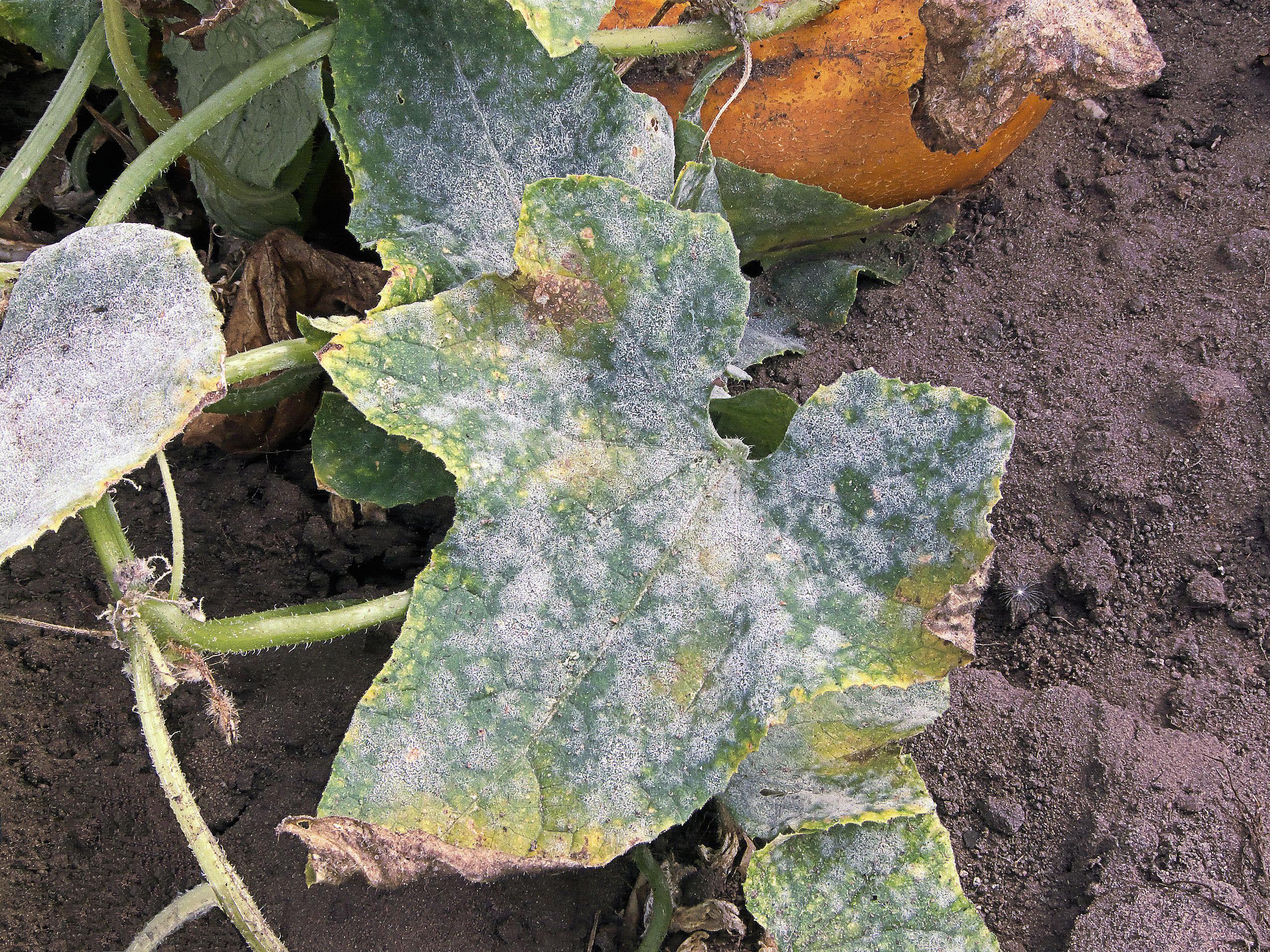
Powdery mildew
Sphaerotheca fuliginea
What is Powdery mildew (Sphaerotheca fuliginea)?
Powdery mildew caused by Sphaerotheca fuliginea is a common fungal disease that affects beans, black-eyed peas, cucurbits (cucumbers, melons, squash, pumpkins), and okra. It is characterized by the presence of a white powdery coating on leaves, stems, and fruits. This disease is prevalent in warm and dry regions. Infected plants exhibit symptoms such as powdery patches, leaf distortion, stunted growth, premature leaf drop, and blemished or deformed fruits.
How does Powdery mildew (Sphaerotheca fuliginea) occur?
It reproduces through a process called asexual reproduction. It produces powdery spores called conidia that are dispersed by wind and can germinate on susceptible plants. When favorable conditions are present, such as warm temperatures and high humidity, the conidia germinate and form new fungal colonies on susceptible plant surfaces. The rapid reproduction and dispersal of conidia contribute to the widespread occurrence and spread of powdery mildew in beans, black-eyed peas, cucurbits, and okra.
Symptoms
1 - Effect on Plants
It affects plant health and reduces yield. It appears as powdery growth on leaves, causing yellowing, distortion, and premature defoliation. Severe infestations can lead to stunted growth and plant decline, impacting overall crop productivity.
2 - Effects on Environment
• The airborne spores of powdery mildew can contribute to poor air quality, particularly in areas with high disease incidence. • Powdery mildew can affect the aesthetic appearance of landscapes, ornamental plants, and gardens.
3 - Soil Health
Powdery mildew can interfere with a plant's ability to take up nutrients from the soil, leading to reduced growth and yields. • Infected plant tissues and debris left in the soil can harbor the pathogen, contributing to disease incidence in subsequent years.
Solutions
1 - Plant Management Strategies
• Choose Resistant Varieties: Opt for vegetable varieties that are resistant to powdery mildew to reduce the risk of infection. • Proper Spacing: Provide sufficient spacing between plants to ensure good air circulation and reduce humidity levels. • Sunlight Exposure: Plant in sunny areas to promote dry conditions and discourage powdery mildew growth.
2 - Cultural Practices
• Watering Techniques: Avoid overhead watering to keep foliage dry; instead, water at the base of plants. • Balanced Fertilization: Apply balanced fertilizers and avoid excessive nitrogen, which can promote susceptible foliage. • Pruning and Sanitation: Regularly remove and destroy infected plant parts to prevent the spread of spores.
3 - Biological Control
• Serenade: A biological fungicide containing the bacterium Bacillus subtilis helps prevent powdery mildew infections. It is considered nontoxic to people, pets, and beneficial insects. • Beneficial Fungi: Certain species of beneficial fungi, such as Trichoderma spp., can help suppress powdery mildew growth when applied as a biocontrol agent. It's essential to read and follow the instructions and precautions provided on the fungicide labels, as they vary based on the specific product and crop being treated.
4 - Fungicides
• Horticultural Oils: Saf-T-Side Spray Oil, Sunspray Ultra-Fine Spray Oil. • Neem Oil: Effective as both an insecticide and fungicide. • Sulfur-based Fungicides: Safer Garden Fungicide (wettable sulfur). • Copper-based Fungicides: Available but not highly effective against powdery mildew. It's important to read and follow the instructions and precautions provided on the fungicide labels, as they vary based on the specific product and crop being treated.
